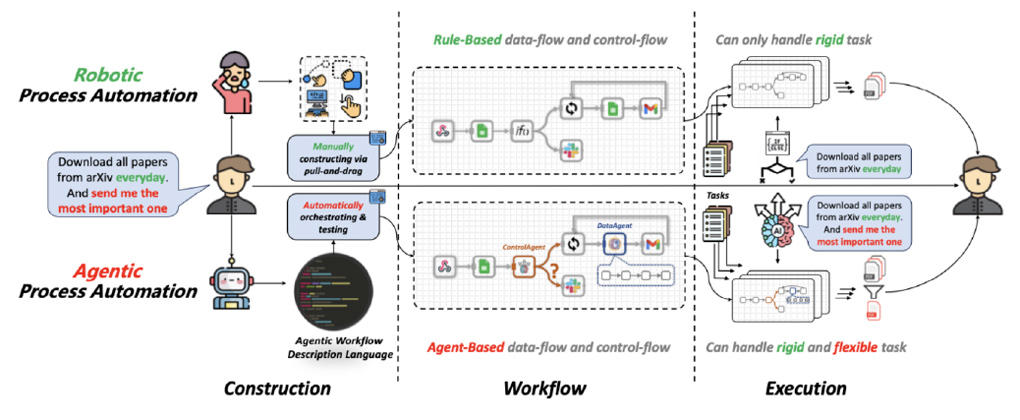Agentic Process Automation (APA)
Agentic Process Automation (APA) offers a transformative approach to business automation by leveraging advanced AI capabilities. This approach provides several significant benefits that go beyond traditional automation methods.
Agentic Process Automation (APA) represents a groundbreaking shift in automation technology, leveraging the capabilities of large language models (LLMs) to manage and execute complex tasks that require human-like intelligence. Unlike traditional Robotic Process Automation (RPA), which is limited to rule-based tasks, APA uses AI agents to design and oversee workflows dynamically, allowing for sophisticated decision-making that adapts to changing conditions. This approach not only increases efficiency but also expands the potential applications of automation in business and technology sectors.
Robotic process automation (RPA) is a technology that mimics the way humans interact with software to perform high-volume, repeatable tasks. RPA technology creates software programs or bots that can log into applications, enter data, calculate and complete tasks, and copy data between applications or workflows as required

APA vs. RPA: Bridging the Intelligence Gap
Robotic Process Automation (RPA) has become crucial in automating repetitive tasks, freeing employees to focus on more complex and creative work. However, RPA's reliance on predefined rules and algorithms may not be suitable for processes that require decision-making or understanding of the context. This is where Augmented Process Automation (APA) comes in. APA is a more advanced form of automation that leverages machine learning-based agents, such as PROAGENT, to create workflows based on human guidance. This approach provides greater flexibility and intelligence as the machine can understand the task's context and make informed decisions.
One of the essential components of APA is the Agentic Workflow Description Language (AWDL), which standardizes the input and output data for software and incorporates process control logic to enable seamless orchestration of tasks. This means that AWDL can be used to describe workflows across different software applications and systems, ensuring that the different processes work together seamlessly.
